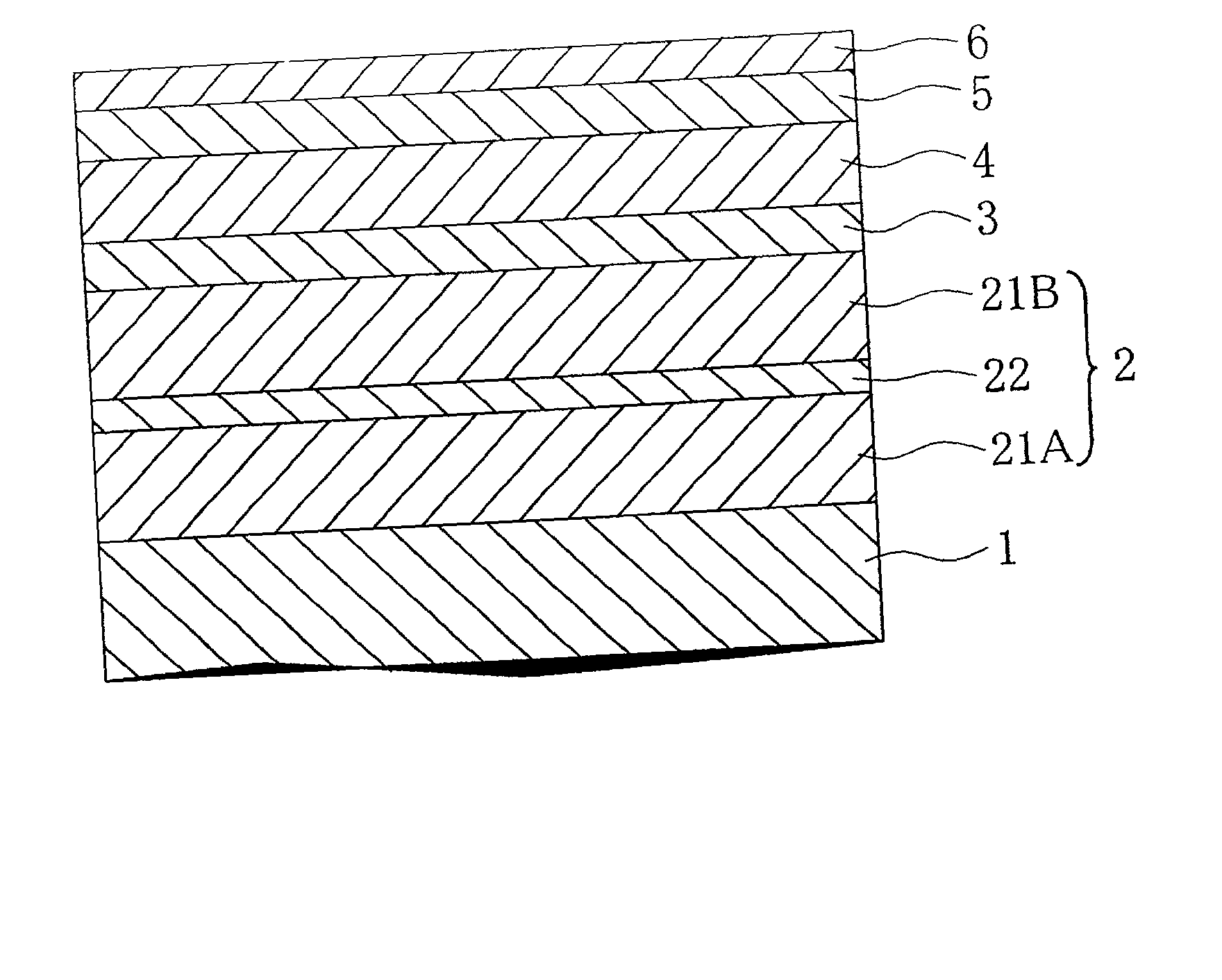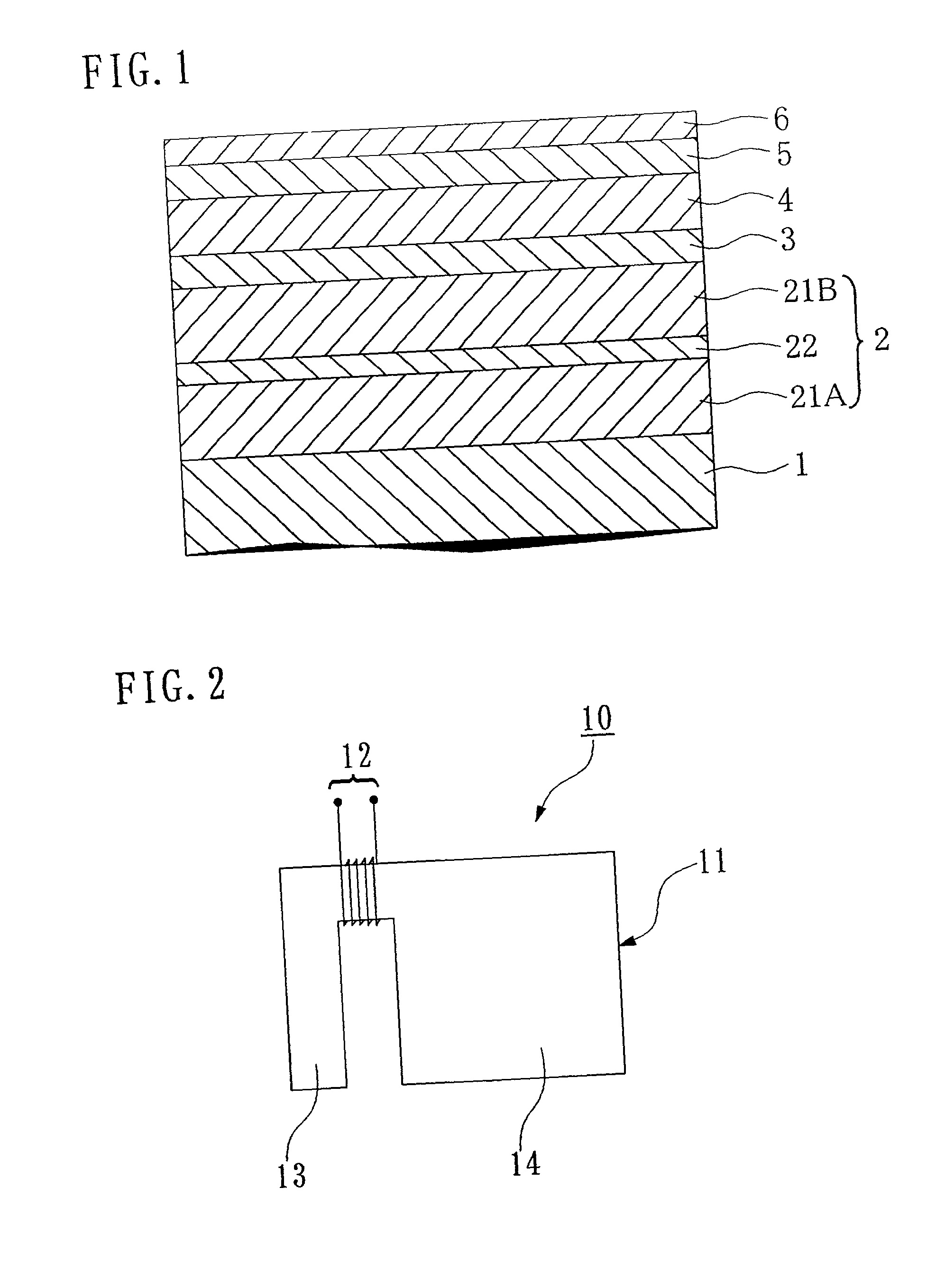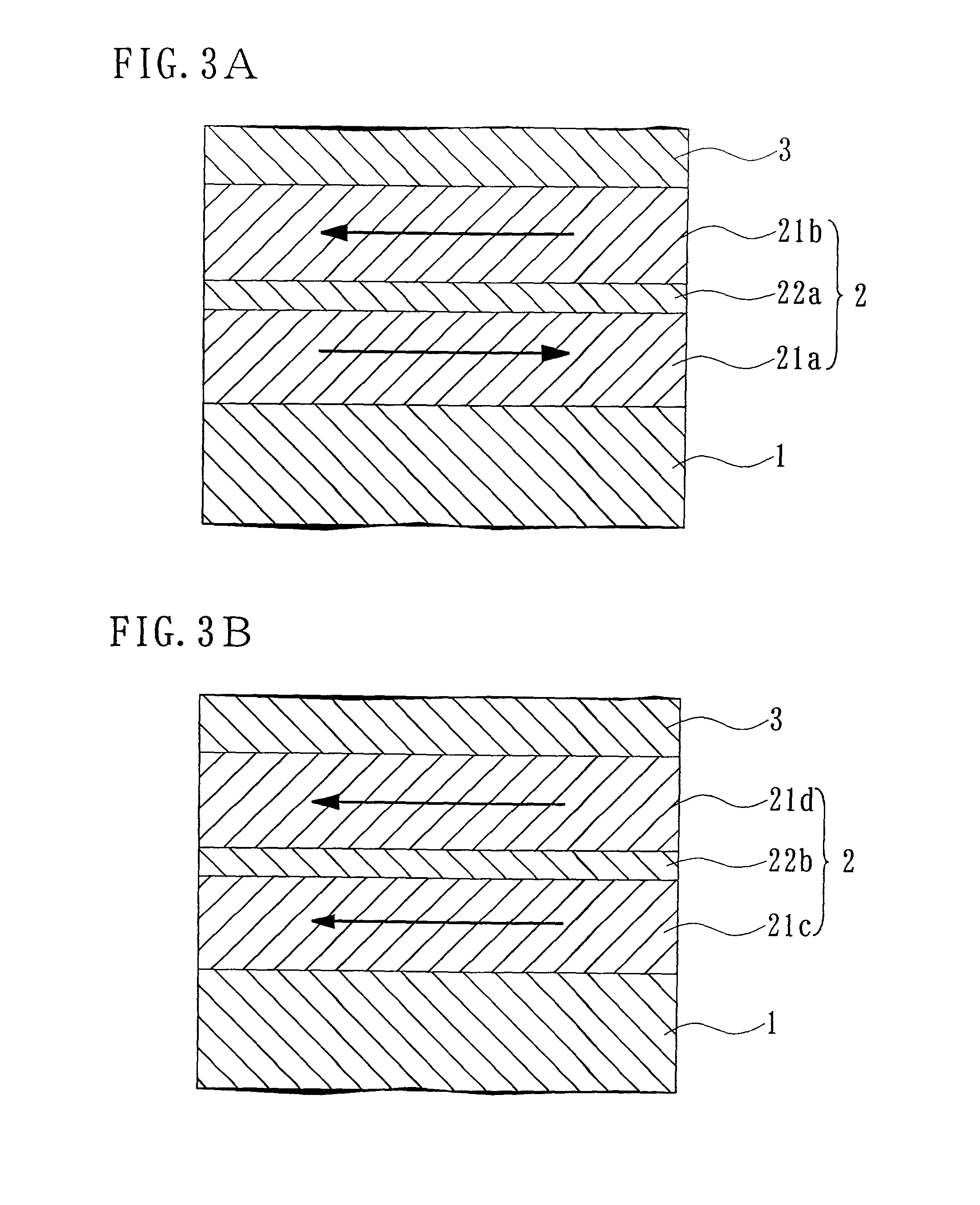Magnetic recording medium, method of producing the same and magnetic recording and reproducing device
a magnetic recording and reproducing device technology, applied in the field of magnetic recording mediums, can solve the problems of easy deterioration of reproducing characteristics, increased error rate, and increased noise of the medium, and achieve excellent magnetic recording and reproducing characteristics
- Summary
- Abstract
- Description
- Claims
- Application Information
AI Technical Summary
Benefits of technology
Problems solved by technology
Method used
Image
Examples
first embodiment
[0044] First Embodiment
[0045] FIG. 1 schematically shows a cross sectional view of the constitution of the magnetic recording medium according to the first embodiment of the present invention. As shown in FIG. 1, the magnetic recording medium according to this embodiment is provided with, on a nonmagnetic substrate 1, a soft magnetic underlayer 2 formed on the nonmagnetic substrate 1, an orientation control layer 3, a perpendicular magnetic layer 4, a protective layer 5 and a lubricating layer 6.
[0046] As the substrate 1, in addition to the aluminum alloy substrate having a plated layer of NiP commonly used for substrates for magnetic recording media, it is possible to use glass substrates (crystallized glass, tempered glass and the like), ceramic substrates, carbon substrates, silicon substrates, silicon carbide substrates and the like, and alternatively, it is possible to use such substrates having formed thereon a layer of NiP formed by plating or sputtering methods, or the like....
second embodiment
[0088] Second Embodiment
[0089] A soft magnetic underlayer 2 comprising two soft magnetic layers 21 and one separation layer 22 was explained above, but it is also possible to use a constitution wherein the soft magnetic underlayer 2 comprises n layers (n is 3 or more) of the soft magnetic layers 21, of which one or more layers comprise a material with a structure having no magnetic domain walls, with (n-1) separation layers 22 being interposed between this plurality of soft magnetic layers 21. This structure will be explained in detail below with reference to FIGS. 4 and 5.
[0090] FIG. 4 schematically shows a partial cross sectional structural view of an example of the magnetic recording medium of the second embodiment of the present invention. The magnetic recording medium shown in this figure differs from the recording medium of the first embodiment shown in FIG. 1 in the point that the soft magnetic underlayer 2 is constituted of three layers of the soft magnetic layers 21, and tw...
third embodiment
[0101] Third Embodiment
[0102] The third embodiment of the present invention will be explained below with reference to the figures. FIG. 6 is a cross sectional view schematically showing the structure of the magnetic recording medium of the third embodiment of the present invention. The embodiment of the magnetic recording medium of the present invention shown in FIG. 6 differs from the embodiment of the magnetic recording medium shown in FIG. 1 in the point that a magnetization stabilizing layer 7 comprising a soft magnetic material is provided between the perpendicular magnetic layer 4 and the protective layer 5. In FIG. 6, the constituent elements which are the same as those in FIG. 1 are indicated by the same reference numerals, and explanations thereof are omitted.
[0103] The magnetization stabilizing layer 7 is a layer comprising a soft magnetic material formed on the perpendicular magnetic layer 4 or on the separation layer (explained below) formed on the perpendicular magnetic...
PUM
| Property | Measurement | Unit |
|---|---|---|
| magnetic flux density | aaaaa | aaaaa |
| thickness | aaaaa | aaaaa |
| thickness | aaaaa | aaaaa |
Abstract
Description
Claims
Application Information
 Login to View More
Login to View More - R&D
- Intellectual Property
- Life Sciences
- Materials
- Tech Scout
- Unparalleled Data Quality
- Higher Quality Content
- 60% Fewer Hallucinations
Browse by: Latest US Patents, China's latest patents, Technical Efficacy Thesaurus, Application Domain, Technology Topic, Popular Technical Reports.
© 2025 PatSnap. All rights reserved.Legal|Privacy policy|Modern Slavery Act Transparency Statement|Sitemap|About US| Contact US: help@patsnap.com



